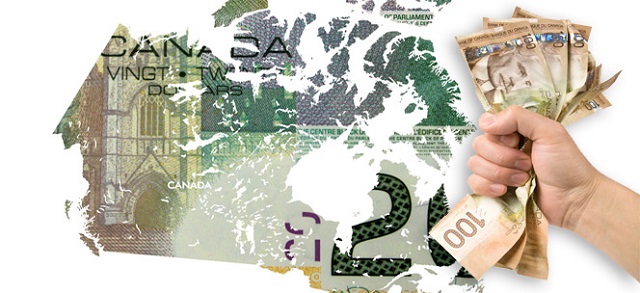Business
2025 Energy Outlook: Steering Through Recovery and Policy Shifts
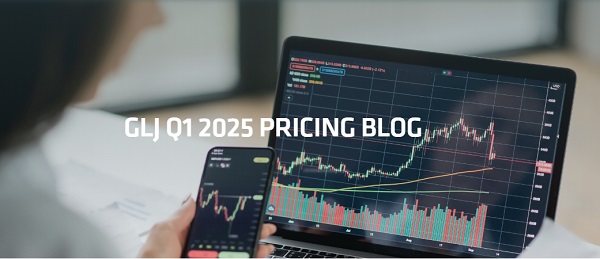
From EnergyNow.ca
By Leonard Herchen & Yuchen Wang of GLJ
Their long-term real price forecast projects WTI at USD $74.00 per barrel and Henry Hub natural gas at USD $4.00 per MMBtu in 2025 dollars, signaling expectations of market stabilization and sustained global demand.
The energy markets in 2025 are undergoing transformative structural changes, highlighted by the operational launch of key infrastructure projects such as LNG Canada. This development significantly enhances Canada’s ability to meet rising global LNG demand while alleviating long-standing supply bottlenecks. At the same time, economic recovery across major markets remains uneven, shaping varied trends in energy demand and production activity.
Geopolitical dynamics are poised to redefine the competitive landscape, with the return of a Trump-led U.S. administration introducing potential shifts in trade policies, regulatory frameworks, and relationships with leading energy-producing nations. These changes, coupled with climate policy advancements and an accelerated global transition toward renewable energy, present additional complexities for the oil and gas sector.
Amid these uncertainties, GLJ’s analysts express confidence in the resilience of market fundamentals. Their long-term real price forecast projects WTI at USD $74.00 per barrel and Henry Hub natural gas at USD $4.00 per MMBtu in 2025 dollars, signaling expectations of market stabilization and sustained global demand.
Oil Prices
The oil market in 2025 reflects a delicate balance between supply and demand. During Q4 2024, WTI prices remained stable, fluctuating between $69 and $73 per barrel. This stability highlights the market’s resilience, even in the face of a slower global economic recovery and geopolitical challenges, including weaker demand in regions like China and increased production in North America.
Geopolitical risks remain pivotal, with ongoing tensions in the Middle East and sanctions on oil-exporting nations such as Iran and Venezuela threatening supply disruptions. While OPEC+ production cuts continue to provide vital support to prices by tightening global supply, these efforts are partially offset by the rising output of non-OPEC producers, notably in the U.S. and Canada.
The Trans Mountain Expansion (TMX) project is reshaping the pricing dynamics of WCS crude relative to WTI. By increasing export capacity to the West Coast, TMX has created conditions for a sustained narrowing of the WCS-WTI differential, moving away from seasonal fluctuations.
The return of a Trump-led U.S. administration introduces additional challenges. Deregulation policies aimed at boosting domestic oil production may exert downward pressure on prices, while potential trade tariffs and revised international agreements could further complicate global oil flows.
In this dynamic environment, GLJ forecasts WTI to average $71.25 per barrel and Brent $75.25 per barrel in 2025. These projections reflect robust long-term fundamentals, including sustained global demand and ongoing efforts to manage supply dynamics, emphasizing the market’s resilience despite near-term uncertainties.
Natural Gas Prices
In 2025, GLJ’s forecast suggests Henry Hub prices will average $3.20 per MMBtu, supported by steady domestic demand, seasonal winter peaks, and robust LNG exports. U.S. natural gas continues to play a critical role globally, ensuring supply security for key markets in Europe and Asia. The combination of growing industrial use, power generation demand, and stable production levels provides a solid foundation for price stability.
For the Canadian market, GLJ projects AECO natural gas prices to average $2.05 per MMBtu in 2025, representing a recovery from the lows of 2024. This improvement is attributed to easing regional oversupply and stabilizing demand. However, challenges persist, as production continues to outpace infrastructure expansion, prompting a downward adjustment of GLJ’s long-term AECO price forecast by $0.40 per MMBtu. The ramp-up of LNG Canada’s operations is expected to progressively enhance market dynamics and address these challenges.
On a global scale, LNG benchmarks such as NBP, TTF, and JKM have remained relatively stable, supported by high storage levels in Europe and balanced supply-demand conditions. European suppliers have effectively managed storage drawdowns, ensuring sufficient reserves for winter. Nevertheless, these benchmarks remain susceptible to market volatility driven by geopolitical uncertainties.
The CAD/USD Exchange Rate
The Canadian dollar experienced sharp depreciation during the last quarter of 2024, with the CAD/USD exchange rate falling below 0.70 USD. Economists have attributed this decline to the strength of the U.S. economy and its currency, the widening gap between the Bank of Canada and the U.S. Federal Reserve’s lending rates, as well as tariff threats and a political crisis in Ottawa. These factors have created a favorable environment for the U.S. dollar, putting downward pressure on the Canadian dollar.
Looking ahead to 2025, GLJ forecasts a CAD/USD exchange rate averaging 0.705 USD, underpinned by steady oil and gas revenues and enhanced export capacity from major projects such as LNG Canada and the TMX and eventual resolution of internal political issues and return to normalcy in US tariff policy.
Nevertheless, the outlook for the Canadian dollar remains uncertain, shaped by global economic recovery—particularly in China—and U.S. policy decisions under the Trump administration. While near-term challenges persist, Canada’s resource-driven economy and strategic energy export position provide a degree of resilience. In the absence of significant economic or geopolitical disruptions, GLJ projects the CAD/USD exchange rate to stabilize around 0.75 USD over the long term.
In 2025, GLJ expanded its database to include forecasts for Colombia Vasconia and Castilla Crude, as well as lithium prices, reflecting the increasing focus on diverse energy and resource markets. The addition of lithium forecasts aligns with the growing global emphasis on energy transition minerals critical for electric vehicles and battery storage solutions. A separate blog, set to be published next week on the GLJ website, will explore the lithium price forecast in greater depth, offering a detailed analysis and strategic implications for the energy sector.
GLJ’s forecast values for key benchmarks is as follows:

2025 Federal Election
MEI-Ipsos poll: 56 per cent of Canadians support increasing access to non-governmental healthcare providers

-
Most believe private providers can deliver services faster than government-run hospitals
-
77 per cent of Canadians say their provincial healthcare system is too bureaucratic
Canadians are increasingly in favour of breaking the government monopoly over health care by opening the door to independent providers and cross-border treatments, an MEI-Ipsos poll has revealed.
“Canadians from coast to coast are signalling they want to see more involvement from independent health providers in our health system,” explains Emmanuelle B. Faubert, economist at the MEI. “They understand that universal access doesn’t mean government-run, and that consistent failures to deliver timely care in government hospitals are a feature of the current system.”
Support for independent health care is on the rise, with 56 per cent of respondents in favour of allowing patients to access services provided by independent health entrepreneurs. Only 25 per cent oppose this.
In Quebec, support is especially strong, with 68 per cent endorsing this change.
Favourable views of accessing care through a mixed system are widespread, with three quarters of respondents stating that private entrepreneurs can deliver healthcare services faster than hospitals managed by the government. This is up four percentage points from last year.
Countries like Sweden and France combine universal coverage with independent providers and deliver faster, more accessible care. When informed about how these health systems run, nearly two in three Canadians favour adopting such models.
The poll also finds that 73 per cent of Canadians support allowing patients to receive treatment abroad with provincial coverage, which could help reduce long wait times at home.
Common in the European Union, this “cross-border directive” enabled 450,000 patients to access elective surgeries in 2022, with costs reimbursed as if they had been treated in their home country.
There’s a growing consensus that provincial healthcare systems are overly bureaucratic, with the strongest agreement in Alberta, B.C., and Quebec. The proportion of Canadians holding this view has risen by 16 percentage points since 2020.
Nor do Canadians see more spending as being a solution: over half say the current pace of healthcare spending in their province is unsustainable.
“Governments shouldn’t keep doubling down on what isn’t working. Instead, they should look at what works abroad,” says Ms. Faubert. “Canadians have made it clear they want to shift gears; now it’s up to policymakers to show they’re listening.”
A sample of 1,164 Canadians aged 18 and older was polled between March 24th and March 28th, 2025. The margin of error is ±3.3 percentage points, 19 times out of 20.
The results of the MEI-Ipsos poll are available here.
* * *
The MEI is an independent public policy think tank with offices in Montreal, Ottawa, and Calgary. Through its publications, media appearances, and advisory services to policymakers, the MEI stimulates public policy debate and reforms based on sound economics and entrepreneurship.
2025 Federal Election
POLL: Canadians say industrial carbon tax makes life more expensive
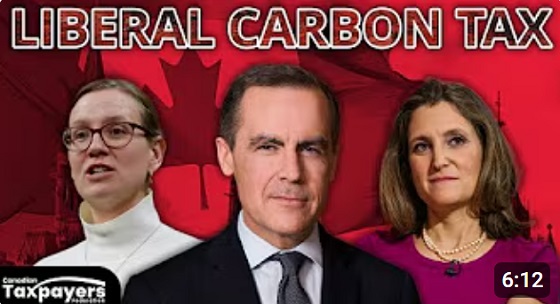
The Canadian Taxpayers Federation released Leger polling showing 70 per cent of Canadians believe businesses pass on most or some of the cost of the industrial carbon tax to consumers. Meanwhile, just nine per cent believe businesses pay most of the cost.
“The poll shows Canadians understand that a carbon tax on business is a carbon tax on Canadians that makes life more expensive,” said Franco Terrazzano, CTF Federal Director. “Only nine per cent of Canadians believe Liberal Leader Mark Carney’s claim that businesses will pay most of the cost of his carbon tax.
“Canadians have a simple question for Carney: How much will your carbon tax cost?”
The federal government currently imposes an industrial carbon tax on oil and gas, steel and fertilizer businesses, among others.
Carney said he would “improve and tighten” the industrial carbon tax and extend the “framework to 2035.” Carney also said that by “changing the carbon tax … We are making the large companies pay for everybody.”
The Leger poll asked Canadians who they think ultimately pays the industrial carbon tax. Results of the poll show:
- 44 per cent say most of the cost is passed on to consumers
- 26 per cent say some of the cost is passed on to consumers
- 9 per cent say businesses pay most of the cost
- 21 per cent don’t know
Among those decided on the issue, 89 per cent of Canadians say businesses pass on most or some of the cost to consumers.
“Carbon taxes on refineries make gas more expensive, carbon taxes on utilities make home heating more expensive and carbon taxes on fertilizer plants increase costs for farmers and that makes groceries more expensive,” Terrazzano said. “A carbon tax on business will push our entrepreneurs to cut production in Canada and increase production south of the border and that means higher prices and fewer jobs for Canadians.”
-

 Alberta2 days ago
Alberta2 days agoMade in Alberta! Province makes it easier to support local products with Buy Local program
-

 2025 Federal Election2 days ago
2025 Federal Election2 days agoASK YOURSELF! – Can Canada Endure, or Afford the Economic Stagnation of Carney’s Costly Climate Vision?
-
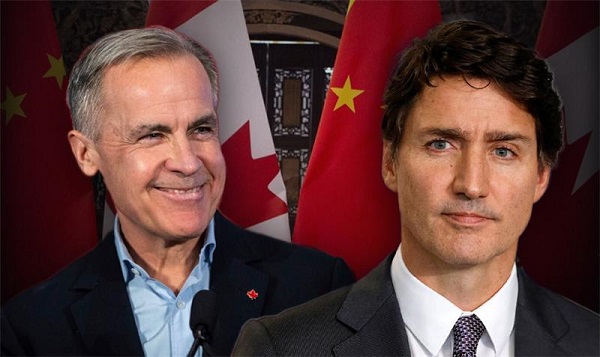
 2025 Federal Election2 days ago
2025 Federal Election2 days agoCSIS Warned Beijing Would Brand Conservatives as Trumpian. Now Carney’s Campaign Is Doing It.
-
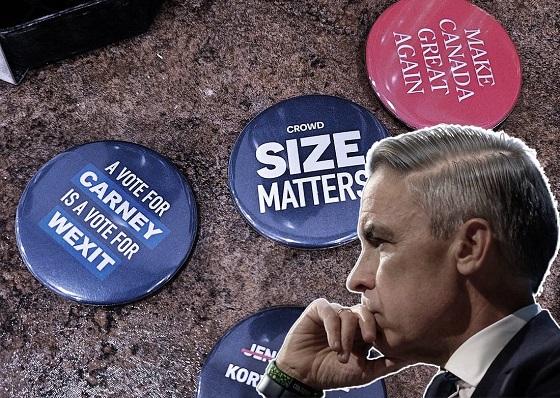
 2025 Federal Election2 days ago
2025 Federal Election2 days agoInside Buttongate: How the Liberal Swamp Tried to Smear the Conservative Movement — and Got Exposed
-

 Bruce Dowbiggin1 day ago
Bruce Dowbiggin1 day agoIs HNIC Ready For The Winnipeg Jets To Be Canada’s Heroes?
-
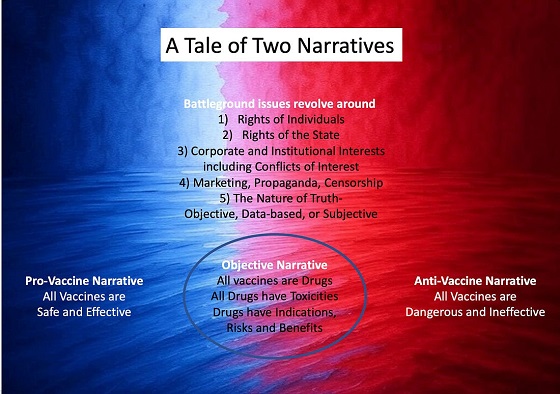
 Dr. Robert Malone1 day ago
Dr. Robert Malone1 day agoThe West Texas Measles Outbreak as a Societal and Political Mirror
-

 COVID-191 day ago
COVID-191 day agoCOVID virus, vaccines are driving explosion in cancer, billionaire scientist tells Tucker Carlson
-

 Health1 day ago
Health1 day agoHorrific and Deadly Effects of Antidepressants





